1. Norwegian Lundehund
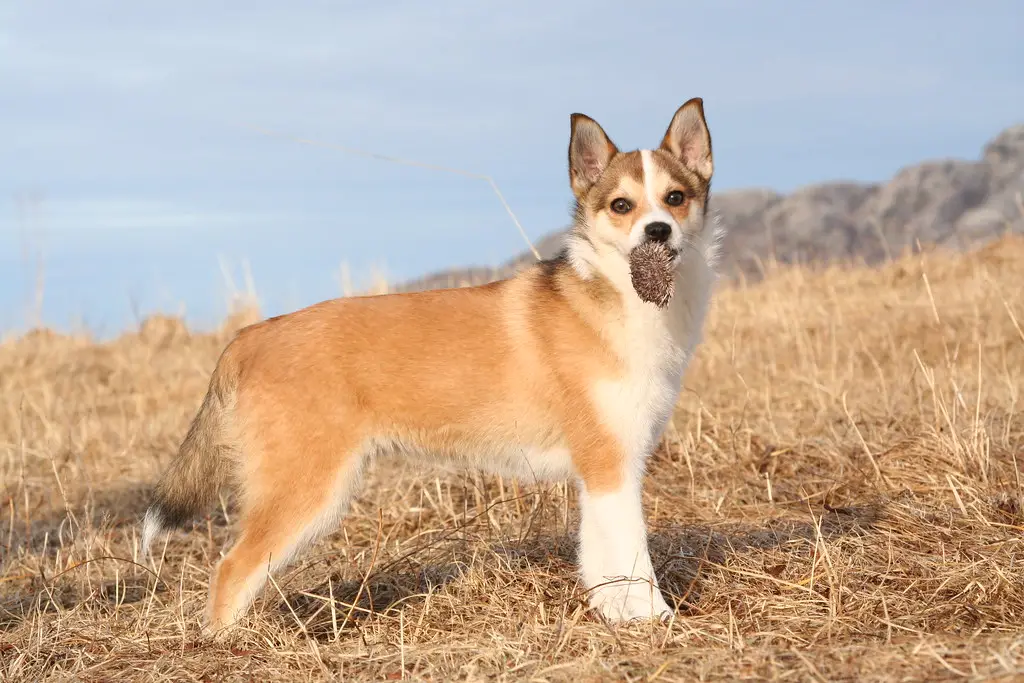
The Norwegian Lundehund is arguably one of the most anatomically unique dogs in the world, once bred to hunt puffins along the steep cliffs and in the rocky crevices of Norway’s coast. Their most extraordinary traits are their ability to bend their heads backward to touch their spine, and having at least six functional toes on each paw, which gave them unparalleled grip and agility as climbers. When puffin hunting was banned in the 1940s, the breed’s purpose vanished, and their numbers plummeted to only about six individuals. Thanks to a few dedicated Norwegian enthusiasts, the breed was saved through careful, closely monitored breeding programs. Though their global population has recovered from the brink, they remain exceedingly rare and a prized possession among those who know their incredible history.
2. Otterhound

Hailing from England, the Otterhound is a massive, shaggy hound originally developed to hunt otters in the country’s rivers and waterways. They are uniquely equipped for this job, possessing large, webbed feet that make them superb swimmers, a dense, oily, waterproof double-coat, and a famously keen nose. However, when otter hunting was outlawed in England in 1978, the breed lost its central purpose. Today, the Otterhound is considered one of the most endangered native dog breeds in the United Kingdom, with a global population of only a few hundred. This makes them significantly more endangered than the Giant Panda, leading conservationists and vets to stress the vital importance of preserving their lineage as a living piece of British heritage.
3. Chinook

The Chinook holds the title of America’s rarest official dog breed, having been developed in New Hampshire by explorer Arthur Treadwell Walden in the early 1900s as an ideal sled dog. Named after Walden’s lead dog, the breed is known for its incredible strength, stamina, and gentle, calm temperament, making them ideal working and companion animals. The breed nearly vanished entirely after World War II, due to a decline in demand for large working sled dogs, with their numbers dwindling to a critical low of about 11 dogs by the 1980s. Thanks to the tireless efforts of dedicated breeders who formed the Chinook Preservation Trust, the population was slowly but surely rebuilt. Today, a few thousand Chinooks exist worldwide, a living success story of American breed revival.
4. Catalburun Turkish Split-Nose Dog

The Catalburun is a truly unique and one of the world’s rarest breeds, native to the Mersin Province of Turkey. Its most striking and identifying feature is a distinctive split nose, a rare genetic trait that appears almost as two separate nostrils. This physical anomaly, which is a result of selective breeding for enhanced scenting ability, is believed to give the Catalburun a superior sense of smell, making it an exceptional hunting dog. The breed remains virtually unknown outside of Turkey, and even there, its population is extremely small and highly localized, which keeps it critically endangered. Their unusual look and specialized hunting heritage make the Catalburun a fascinating, yet little-seen, example of regional canine evolution.
5. Azawakh
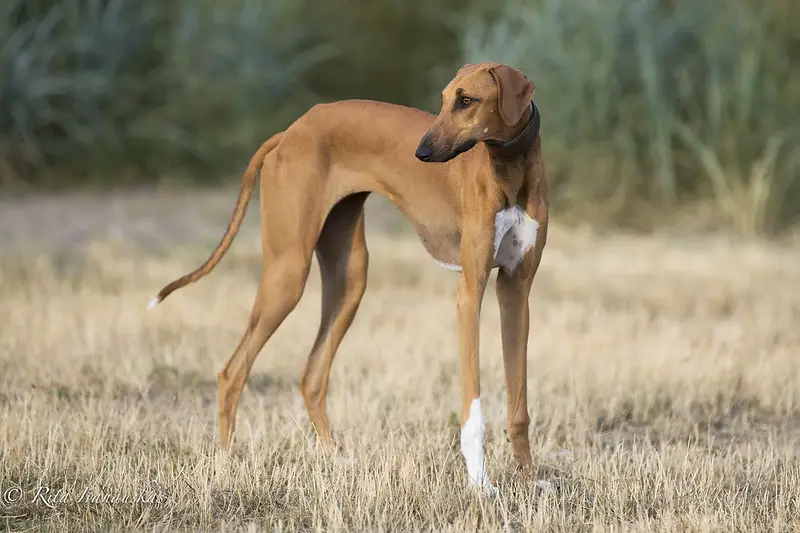
The Azawakh is a tall, incredibly slender, and elegant sighthound that originated in West Africa. For centuries, these dogs were the prized companions of nomadic tribes like the Tuareg, where they served a dual role as swift hunters of desert game and as fiercely loyal, protective guardians. They have a lean, angular build, often described as having skin draped over bone, which is perfectly adapted for the harsh desert heat and rapid running over long distances. Only recently introduced to Europe and North America, the Azawakh remains incredibly rare outside of its native Mali and Niger. Their regal demeanor, independence, and deep bond with their families make them a prized, though little-known, treasure among rare breed enthusiasts.
6. New Guinea Singing Dog
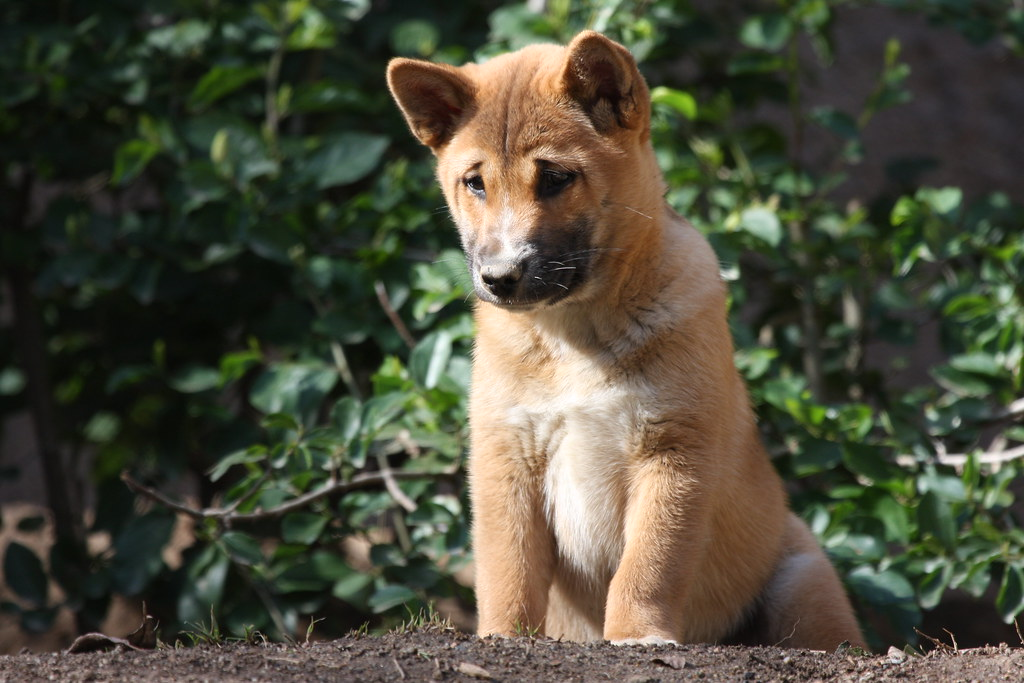
Once feared extinct in the wild, the New Guinea Singing Dog is named for its truly unique, melodious vocalizations, which are a high-pitched, harmonic blend of howl and song unlike any other canine. These primitive dogs, closely related to wild dingoes, were recently rediscovered in the remote, high-altitude highlands of New Guinea after decades of scientists believing they were gone forever. The “singers” possess remarkable physical flexibility, including the ability to rotate their wrists and ankles, which allows them to climb trees. While they are not typically kept as pets, conservation programs are working to study and protect the small existing lineage. Their story is a powerful reminder that even breeds thought lost forever can sometimes be rediscovered and protected.
7. Stabyhoun

The Stabyhoun is a versatile and affectionate sporting dog that hails from the Frisian region of the Netherlands. They are a classic country dog, historically valued by farmers for their skill as a pointing dog, water retriever, watchdog, and all-around pest control expert. Like many working breeds, the Stabyhoun nearly vanished in the 20th century as intensive farming practices and changing lifestyles reduced the need for versatile farm dogs. Dedicated enthusiasts in the Netherlands meticulously rebuilt the population from just a handful of individuals. Today, only a few thousand exist worldwide, and they are highly prized for their calm, affectionate, and biddable nature, making them both a precious cultural heritage breed and an excellent family companion.
8. Telomian
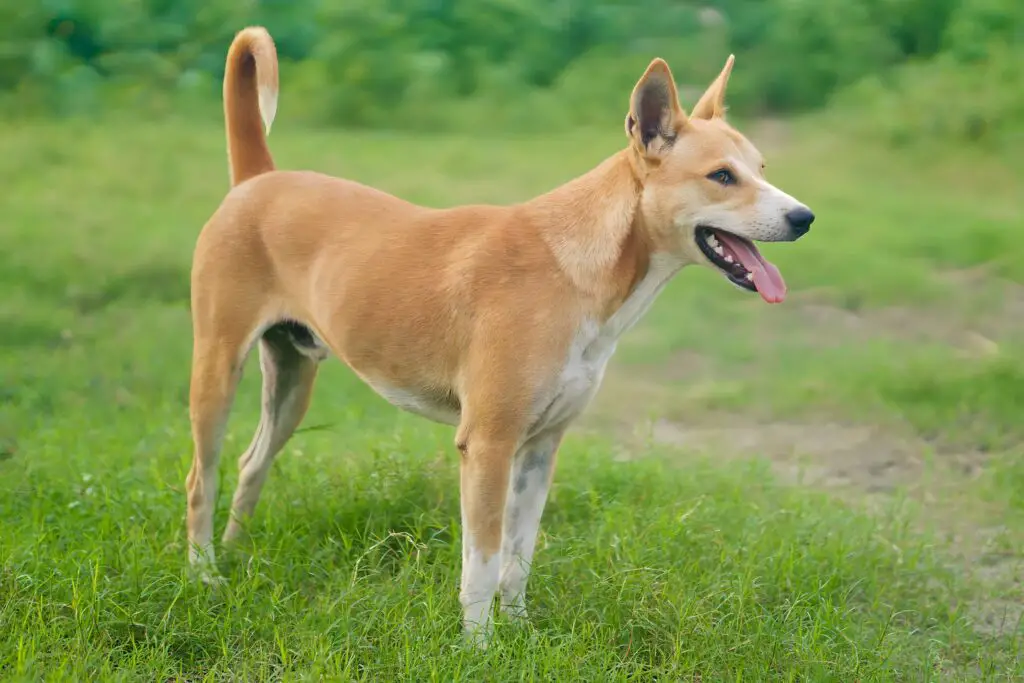
Native to Malaysia, the Telomian is a little-known and fascinating breed with a truly unique history. They were once kept by the indigenous Orang Asli people, who built their homes on stilts to protect against jungle threats. The Telomian developed an amazing ability to climb ladders and navigate the stilt structures with ease, guarding the homes from vermin and intruders. They have a unique, highly mobile paw structure that contributes to their climbing ability. The breed’s numbers are extremely limited, with only small, isolated groups existing outside of Malaysia. The Telomian highlights how isolated cultures can produce highly specialized breeds, and their current rarity raises concerns about the preservation of unique canine traditions against modern influences.
9. Thai Ridgeback

The Thai Ridgeback is a medium-sized dog characterized by the distinctive ridge of hair running backwards along its spine, a feature shared only with the Rhodesian Ridgeback and the now-extinct Phu Quoc Ridgeback. For centuries, these dogs existed almost exclusively in the remote eastern region of Thailand, where they were used as highly valued guard dogs and hunting companions. Their isolated geography, where poor roads prevented cross-breeding with other dogs, kept the breed genetically pure for hundreds of years. They were virtually unknown outside of Thailand until the late 20th century. While they have slowly gained recognition globally, they remain uncommon, requiring experienced owners due to their independent and highly protective nature.
10. Mudi

The Mudi is a rare, versatile, and highly energetic herding dog that originated in Hungary. They are characterized by a medium-length, wavy to curly coat that can come in a variety of colors, and they possess an unmatched enthusiasm for work. Much like other European working breeds, the Mudi was nearly lost during the turbulent 20th century, due to a combination of world wars and the shift away from traditional farming. Thankfully, dedicated Hungarian breeders recognized their value and revived them. Still rare, with only a few thousand worldwide, the Mudi is gaining popularity for its incredible intelligence and agility, often excelling in dog sports and showing how preservation can transform a nearly forgotten working dog into a celebrated modern competitor.
11. Czechoslovakian Wolfdog
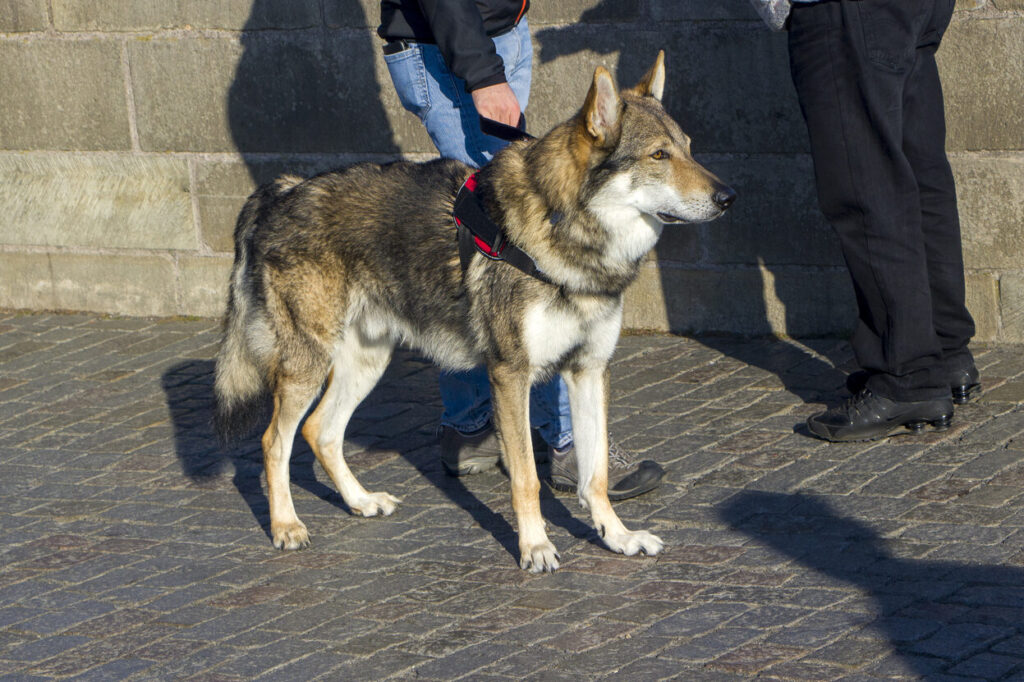
The Czechoslovakian Wolfdog, or Československý Vlčák, is a powerful and unique breed that was created as a military experiment in the 1950s. The process involved intentionally crossing German Shepherds with Carpathian wolves to produce a working dog that combined the wolf’s strength, stamina, and sharp senses with the trainability and loyalty of the German Shepherd. Originally developed for border patrol and military work, the demand for them declined, and the breed almost disappeared. Enthusiasts preserved the line, and they are now a recognized breed, though still rare. Due to their close wolf ancestry, they require highly experienced owners and specialized handling, highlighting a unique and controversial chapter in intentional canine preservation.
12. Sloughi Arabian Greyhound

Known as the “Arabian Greyhound” or the Berber Hound, the Sloughi is an ancient sighthound that originates from North Africa, particularly Morocco, Tunisia, and Libya. For centuries, they were the prized companions of nomadic tribes and royalty, celebrated for their incredible speed, noble elegance, and success as a hunter of desert game. The breed’s numbers significantly dwindled in the 20th century due to modern hunting methods and a general decrease in nomadic life. However, dedicated breeding efforts in Morocco, Europe, and North America have helped to stabilize populations, though they remain rare worldwide. Sloughis are reserved, quiet, and deeply attached to their families, considered a rare cultural treasure among sighthound enthusiasts.
13. Norwegian Elkhound (Gray)

The Norwegian Elkhound, or Norsk Elghund, is an ancient and hardy breed with a history tracing back thousands of years, archaeologists have found skeletons resembling the Elkhound dating back as far as 4000–5000 BC. Hailing from Scandinavia, they are the national dog of Norway and were historically prized for their courage and stamina in hunting large game like moose (elg), bear, and reindeer. They would track the animal and then hold it at bay while barking loudly until the hunter arrived. As traditional hunting lifestyles and farming practices waned in the 20th century, the demand for these working dogs declined, causing their numbers to face a population risk. Preservation societies have since worked to protect the lineage, ensuring the survival of this proud, loyal dog that perfectly embodies the strength of Scandinavian working breeds.
14. Xoloitzcuintli Mexican Hairless Dog

The Xoloitzcuintli, affectionately known as the “Xolo” or the Mexican Hairless Dog, is one of the world’s most ancient breeds, with an unbroken history in Mexico stretching back over 3,000 years. The Aztecs revered them as sacred, believing they possessed the power to guide human souls through the underworld. Despite their revered status, the breed nearly vanished due to interbreeding and persecution during the Spanish conquest. Preservationists in Mexico launched a major effort in the 1950s to save the few remaining dogs, successfully bringing them back from the brink of extinction. Their unusual appearance, hairless skin that often holds a deep, dark color, has secured them a small but devoted following across the globe.
15. Kooikerhondje

The Kooikerhondje is a small, cheerful Dutch spaniel-like dog with a distinctive orange-and-white coat and feathery tail. They were historically used in the Netherlands to lure ducks into traps, a practice known as eendenkooi, by playfully wagging their bushy, white-tipped tails to draw the ducks’ curiosity. The breed was brought to the edge of extinction during the tumultuous period of World War II, with only a handful of dogs surviving. A Dutch baroness, Mascha van Hardenbroek van Ammerstol, is credited with saving the breed by meticulously searching for the last remaining examples and starting a careful breeding program. Today, the Kooikerhondje is still rare but is cherished globally for its happy demeanor and historical connection to a unique Dutch tradition.
16. Lagotto Romagnolo

The Lagotto Romagnolo is an ancient Italian working breed famous for being the world’s only purebred truffle-hunting dog. Originating in the marshlands of the Romagna region, they were initially water retrievers, but with the draining of the marshes, their skills were adapted to sniffing out the highly prized, deeply buried truffles. Despite their unique skill, they nearly disappeared in the mid-20th century. Breed clubs in Italy took on the task of reviving the breed, successfully refining their genetics to emphasize their keen nose and intelligence. Though still considered rare, the Lagotto is now gaining global popularity, not just as a working dog but as a loving, low-shedding, and versatile family companion, underscoring how a specialized skill can save a breed.
17. Azorean Cão de Fila de São Miguel

The Cão de Fila de São Miguel is a powerful and protective cattle dog that is native only to the island of São Miguel in the Azores archipelago, which is part of Portugal. It was originally bred for the demanding job of herding and driving cattle over the island’s rocky, volcanic terrain and has a reputation for being a strong, fearless guardian. The advent of modern industrial farming threatened the breed with extinction as its original purpose declined. However, local enthusiasts, recognizing the dog’s importance to the island’s heritage, organized small-scale breeding efforts to preserve its lineage. The Cão de Fila remains extremely rare and virtually unknown outside of the Azores, embodying the unique history of isolated island life and agricultural tradition.
18. Hawaiian Poi Dog (Extinct)

The Hawaiian Poi Dog serves as a solemn reminder that not every breed can be saved. This breed was once the companion dog of the native Hawaiian people, primarily valued as a companion and ceremonial animal rather than a working hunter. They were historically fed a diet of poi (a taro paste), which is believed to have led to their distinct physical characteristics, including a somewhat pudgy build. The Poi Dog became extinct in the 19th century due to a combination of interbreeding with dogs brought by European settlers and cultural changes that eliminated the need for them. Though they are long gone, their history is a significant case study cited by modern conservationists to highlight how easily unique cultural and genetic canine heritage can be lost forever.
19. Gull Dong

The Gull Dong is a powerful, exceptionally rare breed that originates from Pakistan. This large and muscular dog was developed by crossing the Gull Terrier with the Bully Kutta, creating a formidable mastiff-type animal. They were traditionally bred for guarding, particularly for large estates and livestock, and historically also for the sport of dog fighting, which has contributed to their demanding reputation for strength and aggression. Today, the Gull Dong is rare even in its home country, kept primarily by a small circle of dedicated enthusiasts who value their protective nature. Their scarcity outside of South Asia is due to their challenging training and socialization needs, but as working guardians they represent a unique piece of regional breeding history.
20. American Foxhound

While the American Foxhound is technically one of the oldest native breeds in the United States, its numbers have plummeted so significantly that the American Kennel Club (AKC) considers it a threatened or endangered breed due to extremely low registration numbers. Originally developed from English hounds brought to North America in the 17th century, with George Washington being a famous early breeder, they were bred for the stamina and scenting ability needed for fox hunting. With the decline of traditional, mounted fox hunting, the breed’s popularity waned. Despite their rarity, these dogs are sweet-natured, loyal, and make excellent family companions when properly exercised. Their silent decline is a quiet tragedy, with many people not realizing one of America’s foundational breeds is slipping toward obscurity.
21. Spanish Alano Español

The Alano Español, or Spanish Alano, is a rare, large working dog native to Spain. Historically, this tough, brachycephalic breed was used for a variety of demanding jobs, including hunting big game, managing semi-feral cattle herds, and notoriously, assisting in bullfighting arenas. With the decline of these practices and the general mechanization of farming, the breed nearly vanished by the mid-20th century, with few reliable records of its existence remaining. Dedicated Spanish breeders, however, recognized their value and revived them, focusing on their role as a capable working farm dog. Today, small populations are maintained in Spain and are celebrated for their calm, yet powerful, and intensely loyal nature, keeping this living link to Spain’s rural history alive.
22. Sakhalin Husky

The Sakhalin Husky, or Karafuto Ken, is perhaps the most critically endangered of all the dogs on this list, with only a handful of individuals believed to remain alive. Native to Sakhalin Island north of Japan, they were bred for incredible endurance and power as sled dogs in the harshest Arctic conditions. They gained global fame for their heroic, tragic role in the 1958 Japanese Antarctic expedition, where 15 dogs were famously left behind during a sudden weather evacuation; two, Taro and Jiro, were found alive a year later. Their numbers have since dwindled almost to non-existence due to a lack of demand and the replacement of dog sleds with snowmobiles, making their story a poignant and urgent reminder of a breed whose legacy is etched in survival against impossible odds.
These stories of the world’s rarest dogs are more than just a list of names; they are powerful narratives about culture, tradition, and the passionate dedication of breeders who refused to let history disappear. From the split-nosed Catalburun to the nearly extinct American Foxhound, each dog represents a unique piece of global heritage pulled back from the brink. They remind us that preserving these breeds is not just about keeping a line of dogs alive, but about saving a living connection to human history.
This story 22 Rare Dog Breeds You’ve Probably Never Heard Of (and How Some Came Back from Extinction) was first published on Daily FETCH


